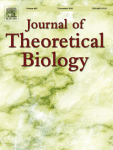Transcription-based circadian mechanism controls the duration of molecular clock states in response to signaling inputs.
J Theor Biol. 2019 Sep 17:110015. doi: 10.1016/j.jtbi.2019.110015. [Epub ahead of print]
Almeida S1, Chaves M2, Delaunay F3.
Author information
1. 1600 Université Côte d’Azur, Inria, INRA, CNRS, UPMC Univ Paris 06, Biocore team, Sophia Antipolis, France; Université Côte d’Azur, CNRS, INSERM, iBV, France. Electronic address: sofia.jf.almeida@gmail.com.
2. 1600 Université Côte d’Azur, Inria, INRA, CNRS, UPMC Univ Paris 06, Biocore team, Sophia Antipolis, France. Electronic address: http://www-sop.inria.fr/members/Madalena.Chaves/.
3. Université Côte d’Azur, CNRS, INSERM, iBV, France. Electronic address: http://www.ibv.unice.fr/research-team/delaunay/.
Abstract
The molecular oscillator of the mammalian circadian clock consists in a dynamical network of genes and proteins whose main regulatory mechanisms occur at the transcriptional level. From a dynamical point of view, the mechanisms leading to an oscillatory solution with an orderly protein peak expression and a clear day/night phase distinction remain unclear. Our goal is to identify the essential interactions needed to generate phase opposition between the activating CLOCK:BMAL1 and the repressing PER:CRY complexes and to better distinguish these two main clock molecular phases relating to rest/activity and fast/feeding cycles. To do this, we develop a transcription-based mathematical model centered on linear combinations of the clock controlled elements (CCEs): E-box, R-box and D-box. Each CCE is responsive to activators and repressors. After model calibration with single-cell data, we explore entrainment and period tuning via interplay with metabolism. Variation of the PER degradation rate γp, relating to the tau mutation, results in asymmetric changes in the duration of the different clock molecular phases. Time spent at the state of high PER/PER:CRY decreases with γp, while time spent at the state of high BMAL1 and CRY1, both proteins with activity in promoting insulin sensitivity, remains constant. This result suggests a possible mechanism behind the altered metabolism of tau mutation animals. Furthermore, we expose the clock system to two regulatory inputs, one relating to the fast/feeding cycle and the other to the light-dependent synchronization signaling. We observe the phase difference between these signals to also affect the relative duration of molecular clock states. Simulated circadian misalignment, known to correlate with insulin resistance, leads to decreased duration of BMAL1 expression. Our results reveal a possible mechanism for clock-controlled metabolic homeostasis, whereby the circadian clock controls the relative duration of different molecular (and metabolic) states in response to signaling inputs.
PMID: 31539528
DOI: 10.1016/j.jtbi.2019.110015

